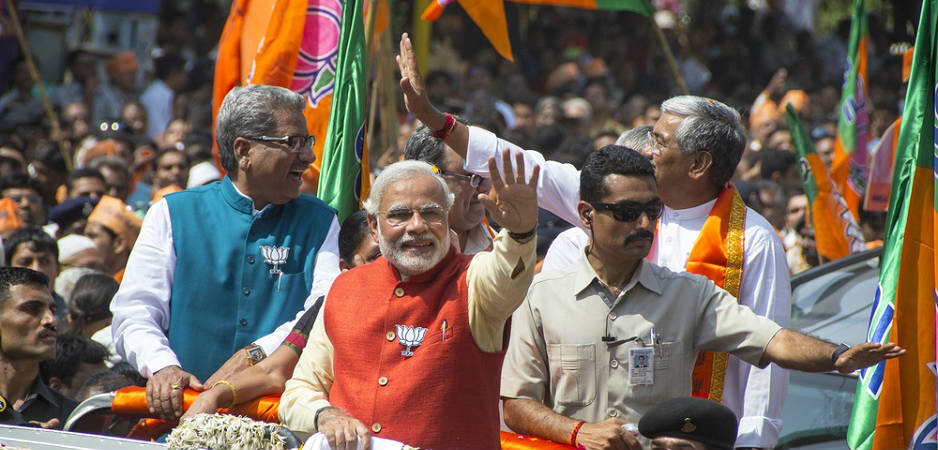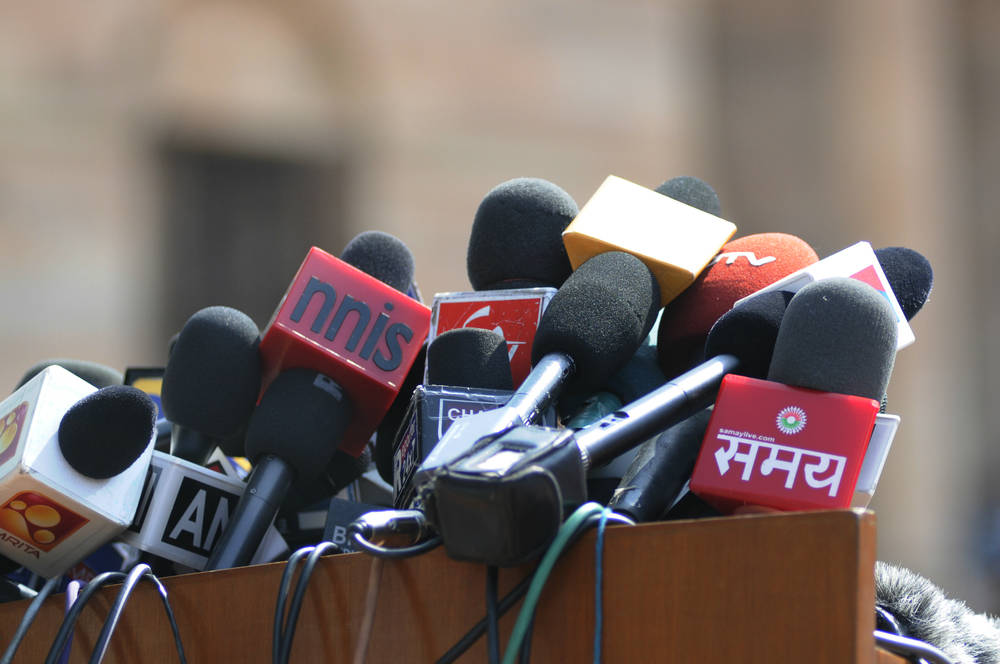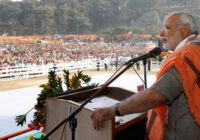Modi should publicly clarify his position on Hindu nationalism and not allow others to frame the issue for him.
After nearly nine months in office, Indian Prime Minister Narendra Modi is facing a fearsome enemy: a resurgent militant, chauvinistic and violent Hindu nationalism. The identity of this threat is significant, considering that Modi’s political beliefs are deeply rooted in the Hindutva movement, or Hindu Right. His election victory in 2014 was attained with the promise of economic rejuvenation for a rising India. However, foreigners and Indians alike did not expect Hindu nationalist ideologues to derail Modi even before he could launch his economic reform agenda.
The origins of Hindutva, or militant and revivalist Hindu chauvinism, can be traced back to early 20th century British rule in India. Hinduism witnessed reform movements of two kinds: the Westernizing one named Brahmo Samaj, founded in 1828 by Raja Rammohan Roy; and the conservative Arya Samaj, launched in April 1875 by Swami Dayanand Saraswati. While Brahmo Samaj and its sympathizers sought to modernize and Westernize Hinduism, Arya Samaj sought to take Hinduism back to a pre-imagined ancient era of its own creation. A conservative backlash within Hinduism began, leading to the creation of various organizations promoting Hindutva ideas — some educational and cultural, and others political.
This backlash needs to be understood in the context of the era’s religious demographics. Until 1872, although India was perceived globally as a Hindu-majority region, the statistics did not back this up. The British started the decennial census system in 1872, which included data from India, and the first census was published in the same year. Throughout India’s history, the average person living in a village may have been born to a particular religion; however, local customs were often more important than faith. When the British census began, a large proportion of people selected the religious “other” category because they were unsure which religion they belonged to, or they refused to be categorized.
However, the British Raj differentiated between government officials on the basis of religion. When the first elections were allowed, citizens voted for representatives of their respective religious communities. Religion dictated one’s political identity, and it was important for communities of faith (especially the two largest, Hindus and Muslims) to ensure that the Raj felt their influence. In 1909, a pamphlet entitled Hindus: A Dying Race made the absurd argument that if Hindus did not have more children, they would soon become a minority and Muslims would overrun India. While clearly false and outrageous, the screed gained prominence among Hindu conservatives and revivalists who already feared this implausible scenario. As recently as December 2014, Praveen Togadia, a senior leader of the Vishwa Hindu Parishad (World Hindu Council), spoke about the need to raise the percentage of Hindus from 82% to 100% of the population.
Hinduism is unique among most religions, especially the Abrahamic faiths. One may be born a Hindu but cannot convert to the faith via a ceremony. There is also no fundamental creed or common scripture that every Hindu should know or recite. Hinduism increased in popularity and spread across the Indian subcontinent due to its pluralism, its acceptance of individual differences and its catholicity. However, various Hindus began to fear their polytheistic faith lacked the means to compete with the monotheistic faiths, in particular Islam and Christianity.
This feeling of vulnerability led to the popularity of the Arya Samaj and other similar movements. It enabled the group to promote the Vedas, the ancient Hindu texts, as an official religious sacrament. The Arya Samaj also inserted conversion into Hinduism through the Shuddhi (purification) ceremony. These developments conversely resulted in the growth in popularity of the Muslim Tabligh and Tanzim movements. A mutual sense of vulnerability and suspicion created a cycle of growth in the two religious communities.
Two main issues widened the rift between Hindus and Muslims in the early 20th century British Raj. The first was language. Until then, Hindustani was the spoken language of the majority in northern India (the official language being English). The need to make themselves unique led Hindus, with British encouragement, to demand that their language be called Hindi and for it to be written in Devanagri (Sanskrit-based script). At the same time, Muslims requested that Urdu be their language and the Arabic script be used. Secondly, despite the fact that many Hindus considered the cow to be sacred while Muslims did not, for centuries the two groups had lived together without this becoming a serious issue. During this period, however, Hindu cow protection leagues were created to defend cows — sometimes with violence. Meanwhile, many Muslims deliberately slaughtered cows near Hindu temples to provoke confrontation.
The end of British rule and the partition of India in 1947 left a bloody and violent legacy. Approximately 1 million people were killed during the partition and another 14 million moved across borders. The deaths and diaspora were religiously motivated — Hindus and Sikhs killed Muslims, and Muslims killed Hindus and Sikhs.
India’s founding father, Mahatma Gandhi, was shot dead on January 30, 1948. His assassin, a Hindu revivalist named Nathuram Godse, believed that his target was too sympathetic to Muslims. Gandhi’s murder by a Hindu revivalist, combined with the bloody division of India that took place on religious grounds, left an indelible legacy of religious intolerance on Indian nationalism and complicated the issue of citizenship in the Indian constitution.
According Granville Austin’s book, Working a Democratic Constitution: A History of the Indian Experience, the Indian Constitution is not simply a set of laws and articles, but a social charter. The constitution guarantees wide-ranging rights to its citizens, which are extended to its large minority populations. The very first words of the Preamble define India as a secular state. The nation is a pluralistic democracy where citizenship is territorial and all minorities, ethnic and religious, are treated as equals.
In contrast, Hindutva calls for an entirely different definition of Indian citizenship. Vinayak Damodar Savarkar, the leading ideologue of Hindutva, wrote a 1923 pamphlet called Essentials of Hindutva, which argues that a true citizen must be a male whose faith originates from from the Himalayas or the Indus to the Indian Ocean as his Fatherland and Holy Land. This meant that only followers of Hinduism, Sikhism, Jainism and Buddhism could be true citizens, since the holy lands of other religions are located outside of the Indian subcontinent. When Sadhvi Niranjan Jyoti, a member of the Indian parliament for Fatehpur, contrasted the “sons of Ram” with “illegitimates” during a speech in New Delhi on December 2, 2014, she was referring to Savarkar’s definition of a true citizen.
Gandhi’s legacy as father of the nation, coupled with India’s first 17 years as an independent country under Jawaharlal Nehru, left what is referred to as Nehruvian secularism. This ideology has been the foundation of Indian nationalism for the last six decades and has ensured a semblance of stability.
This edifice started to crack in the 1990s with the resurgence of Hindutva. The growing Indian economy created a burgeoning middle-class that was more conservative, outwardly religious and demonstrative of its beliefs — which it often sought to impose on others. The rise of Islamist radicalism in other parts of the world, including in South Asia, has only emboldened Hindu revivalists.
Over the years, there has been a rise in the belief that Indian secularism is “pseudo-secularism” because it “pampers” India’s minorities (Muslims and Christians) and discriminates against the Hindu majority. “Shout with pride that you are Hindu” is a common chant heard at revivalist protests. There has been a rise in the number of religious riots and communal incidents, with the most violent ones associated with the demolition of a mosque in Ayodhya in December 1992 and the massacre in Gujarat in 2002.
There have been a number of other cases in the last six months, the majority of which were engineered to use religion to shore up the Hindutva voter base. For example, a member of parliament force-fed a Muslim who was fasting for Ramadan. Also, Hindu extremist groups staged the conversion of 57 Muslim families in Agra, Uttar Pradesh, under the guise of “homecoming.”
There are a few possible explanations for the rise of Hindu nationalism.
First, this could be an internal revolt by Hindu revivalists, or the “Saffron Brigade” — a term used in India to refer to the various right-wing Hindu organizations — to pressure Prime Minister Modi to use his electoral mandate to implement their preferred policies. This is the only explanation as to why Modi’s cabinet members have pandered to Hindu revivalists, through Niranjan Jyoti’s remarks, or External Affairs Minister Sushma Swaraj’s contention that the Bhagavad Gita be made the national book of India. However, it is also known that Modi has privately reprimanded his ministers for such transgressions, which explains why only a few days after voicing her opinion, Swaraj spoke about the need for tolerance and pluralism in India.
The other possibility is that Modi is finally showing his true colors. However, this is unlikely, considering that Modi’s election campaign and his speeches after becoming prime minister focused on economic development and not Hindutva. Further, his speech on August 15, 2014, emphasized the need to reduce “communal tensions” and to remove the “poison of casteism, communalism, regionalism, and discrimination on social and economic basis” as they were “obstacles in our way forward.” While he seems to have censured his more outspoken ministers and party members in private, Modi has yet to publicly assert his stance on Hindu nationalism. .
India’s growth, security and future are tied to its identity as a pluralistic, democratic and secular nation that is a pillar of stability in a region and world that is increasingly chaotic. If India is not able to maintain this equilibrium, it will face insurmountable challenges. India is an extremely diverse country that, despite any differences, has managed to not only survive but thrive. Countries even smaller and more homogenous have either collapsed or fragmented. The only reason why India has not is because Gandhi and Nehru’s legacy created an Indian nationalism that is inclusive, pluralist and secular. If this identity is tampered with, the state will become vulnerable and unable to face the issues that lie ahead. For the sake of peace, Prime Minister Modi should publicly clarify his position on Hindu nationalism and not allow others to frame the issue for him.
We bring you perspectives from around the world. Help us to inform and educate. Your donation is tax-deductible. Join over 400 people to become a donor or you could choose to be a sponsor.
The views expressed in this article are the author’s own and do not necessarily reflect Fair Observer’s editorial policy.
Photo Credit: Nisarg Lakhmani / Arindambanerjee / Shutterstock.com
Support Fair Observer
We rely on your support for our independence, diversity and quality.
For more than 10 years, Fair Observer has been free, fair and independent. No billionaire owns us, no advertisers control us. We are a reader-supported nonprofit. Unlike many other publications, we keep our content free for readers regardless of where they live or whether they can afford to pay. We have no paywalls and no ads.
In the post-truth era of fake news, echo chambers and filter bubbles, we publish a plurality of perspectives from around the world. Anyone can publish with us, but everyone goes through a rigorous editorial process. So, you get fact-checked, well-reasoned content instead of noise.
We publish 2,500+ voices from 90+ countries. We also conduct education and training programs
on subjects ranging from digital media and journalism to writing and critical thinking. This
doesn’t come cheap. Servers, editors, trainers and web developers cost
money.
Please consider supporting us on a regular basis as a recurring donor or a
sustaining member.
Will you support FO’s journalism?
We rely on your support for our independence, diversity and quality.









Comment